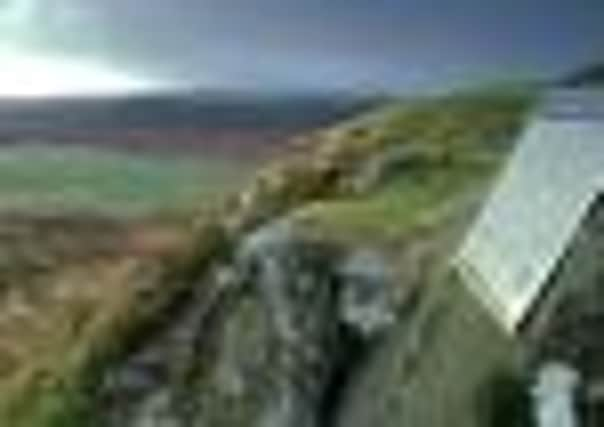Travel: Kilmartin Glen, Argyll


The cairn we’ve stopped at dates from approximately 3,000 BC, but harbours a stone kist or coffin installed some 1,000 years later.
The air is loud with birdsong, bluebells are emerging, fern croziers unfurling, and the Kilmartin Burn gurgles through glades of irises. On the other side of the glen, 21st-century traffic hums along the Lochgilphead-Oban road, but peer into one of these kists and you gaze through the millennia to when this valley floor was a sacred place.
Advertisement
Hide AdKilmartin Glen today is regarded as one of the most important prehistoric landscapes in Europe, and next weekend sees a new book, In the Footsteps of Kings, published by the Kilmartin House Museum to guide the visitor through the glen. The book’s 25 walks also take in the unique bogland of the Mòine Mhór, the “Great Moss”, out of which rises the mound of Dunadd – capital of Dalriada, the ancient kingdom of the Scots before there was a Scotland – as well as a more recent marvel, the Crinan Canal.
It was Tony Robinson of television’s Time Team who commented on the uniqueness of Kilmartin House. “How many museums can you go into,” he asked, “where you can examine a Bronze Age pot and look out of the window and see the burial mound where it came from?” “That’s our USP,” says Anne Smart, the museum’s administrator, who reckons that the area is still underexposed, despite its riches.
It’s the sheer concentration of archaeological features – some 800 at the current tally – that makes the glen so important, says Dr Sharon Webb, the museum’s director and editor of the new book. People may have been living in the area as far back as 11,000 BC, but it was during the Bronze Age that there was intense monument building activity, with a line of at least seven cairns dominating the valley floor and standing stones rearing from the land, while cup-and-ring carvings adorn rocks.
“The concentration of ritual monuments is incredible,” says Dr Webb. “We know that during the early Bronze Age there was some kind of social elite living here that was able to create these enormous cairns and the linear cemetery. Everyone has different theories about why, but one is that they were controlling the import of copper into Scotland.”
To the south, the glen opens out into the Mòine Mhór and the rocky knoll of Dunadd, a modest little hill which resonates hugely in our history for, from the 6th to the 10th centuries, it was a royal fortress and effectively the capital of Dalriada, the kingdom established across Argyll and County Antrim by the people known to Latin chroniclers as the Scotti.
Traditionally it was held that the kingdom of Dalriada was founded by incoming Gaelic-speaking Irish, but according to Webb, there is a recent view that Gaelic was already spoken in the area, and there was no wholesale migration from Ireland. Whatever, Dunadd became a powerful political centre, while vessels sailed up the River Add bearing spices and wines from France and the Mediterranean, as well as tin from Cornwall.
Advertisement
Hide AdStanding on Dunadd today, you can place your foot in a footprint carved into the stone, thought to date from pagan ceremonies conferring kingly status, and proclaim yourself monarch of all you behold. And from Dunadd, there is indeed a great deal to behold. To the south, the flat bogland of the Great Moss is curtailed by the Crinan Canal as it runs alongside the more wayward coursing of the Add. Beyond that lie the lush oakwoods of Knapdale, home, these days, to reintroduced European beavers.
If you don’t know this beautiful area, next Saturday is a good time to establish an acquaintance. Sharon Webb will sign copies of her book at the museum while other activities will include wildlife walks. Go now and you might get there before the midges do.
Advertisement
Hide AdTHE FACTS In the Footsteps of Kings is published on 19 May by Kilmartin House Museum. Kilmartin House Museum, Kilmartin, Argyll, tel: 01546 510278, visit www.kilmartin.org; open 10am-5:30pm seven days; £5/£4/£2.